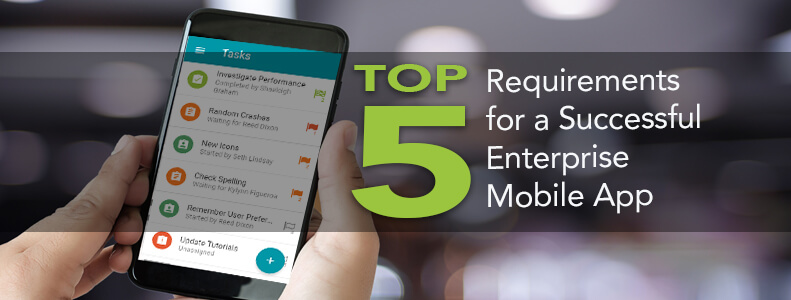There are a number of elements that are critical to the successful creation and adoption of mobile apps. Here are my Top 5:
1. Addressing the user’s “What’s in it for me?” question
Often, the business motivation for implementing a new mobile app is to streamline operations, increase efficiencies or reduce costs. Examples include improved job scheduling, stock management or customer service levels. Even though the mobile app will deliver those benefits to the business, it still must address the needs of the users.
When asking people to change the way they have operated the business process with a new way of working (a new app), there needs to be a clear and positive answer to the question they will ask… “What’s in it for me?”. Unless the new app makes working easier, better or faster, there may be little incentive for users to adopt the new way of working. Even though the app may deliver the required business functionality, many early mobile projects have failed because they didn’t consider users’ requirements and they didn’t listen to users through the development process.
2. A great user experience (UX)
Employees are consumers too, and they carry phones and use apps in many other parts of their lives – not just at work. As a result, they know what a good mobile UX is, and their expectations are high. It’s important for enterprises to focus not just on functionality but also on high quality, consistent design. Failing to do so can result in poor user engagement and adoption.
3. The ability to adapt to different working environments
Mobile users may encounter variable working environments. From checking air conditioning systems on rooftops to underground wiring systems, the device being used, the apps it runs and the network they run over need to cope with a variety of conditions. As a result, different types of apps may be created. Responsive online web apps, offline local apps with database sync and hybrid apps are all possible.
Understanding the working environment of the user will often determine which approach is best. For example, if it’s critical that users can access information even when there is no connection available, then an offline local app that syncs the data the user needs in advance, may be the best option, but some apps need real-time data and must be online. Understanding how users need to work and access information is critical in understanding the best approach for building and delivering mobile apps.
4. Tight integration with existing systems
With mobile now being at the forefront of thinking about the design of systems, integration with existing systems is more important than ever. Early mobile apps were often run in a ‘silo’ which clearly no longer will suffice. The challenge is that integration is highly complex and often causes delays and high costs to be incurred. Integration with multiple apps and multiple databases often in real-time, to systems with a wide range of ERP functions is key to success.
5. Easy maintenance and updates
Users have become accustomed to frequent software updates and expect their experience to improve. Being able to regularly update apps based on feedback, changing business processes and technology considerations (such as security), is a critical success element. Too often, mobile app projects focus on version 1.0 and don’t take into account incremental follow-up versions; either in scope or budget. Improvements will need to be made and the incremental approach to delivering them has proved itself with mobile app projects.








